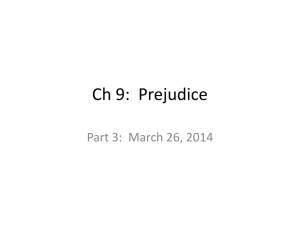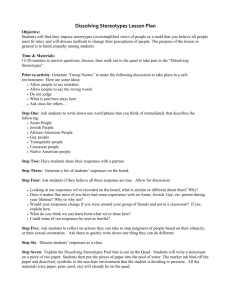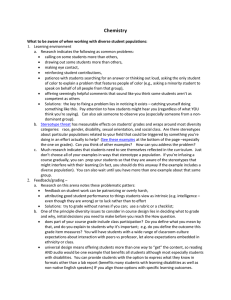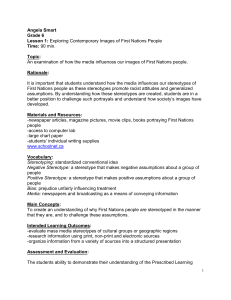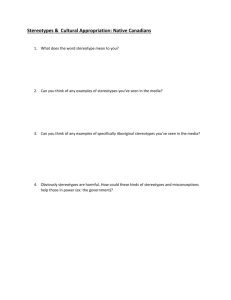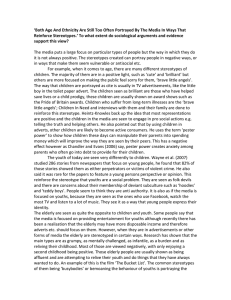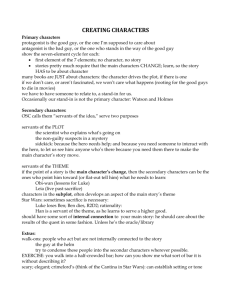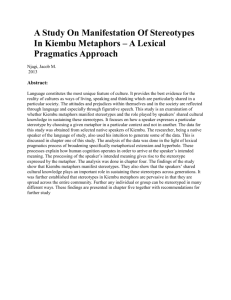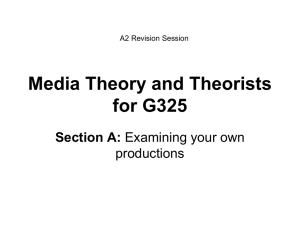Stereotype formation
advertisement
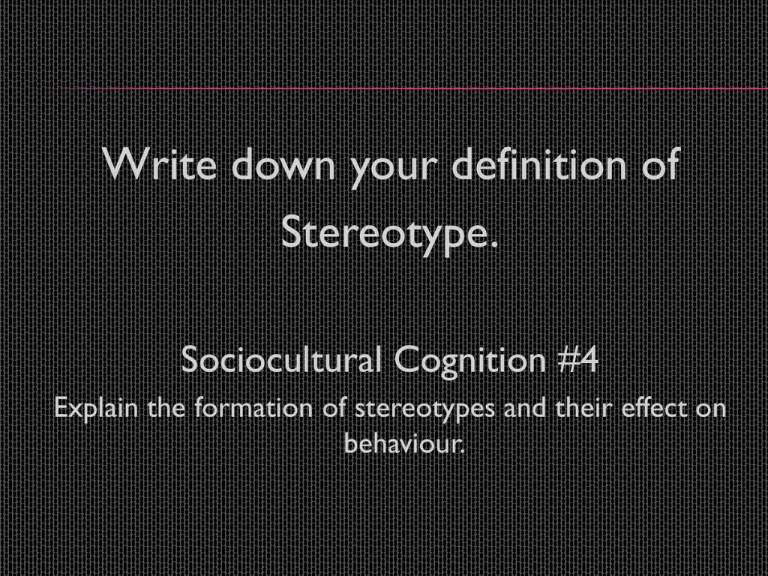
Write down your definition of Stereotype. Sociocultural Cognition #4 Explain the formation of stereotypes and their effect on behaviour. STEREOTYPE A social perception of an individual in terms of group membership or physical attributes A generalization about a group and then attributed to members of that group Book These definition on page 113 stereotypes can be + or – Examples?? A form of social categorization which can affect behaviour STEREOTYPE THREAT Occurs when one is in a situation where there is a threat of being judged or treated stereotypically , or a fear that your actions will unintentionally confirm the stereotype STEELE AND ARONSON (1995) 30 minute verbal, multiple choice, test One group was told it was a “genuine test of their abilities” African-Americans scored lower than whites A second group was told it was a lab task used to study how certain problems are solved African-Americans scored higher than the first group African-American scores rose to the level of white students Other studies corroborate these findings Conclusion Stereotype threat can affect the members of just about any social or cultural group, if the members believe that stereotype SPOTLIGHT ANXIETY Causes emotional distress and pressure that may undermine performance Steele (1997) Spencer et al (1977) Stereotype: women are not as strong in mathematics as men When given a difficult math test women who were strong in math underperformed compared with equally qualified men A literature test showed no disparity between the sexes There was no stereotype threat about literature HOW ARE STEREOTYPES FORMED? Campbell (1967) Two 1. 2. sources of stereotypes Personal experience with individuals and groups Gatekeepers: media, parents, and other members of our culture Campbell argues that stereotypes have a basis in some reality The “grain of truth” hypothesis What are some problems with this hypothesis?? Attribution errors are common ILLUSORY CORRELATION Hamilton & Gifford (1976) People see a relationship b/n two variables even when there is none For example, women’s inferior ability in math Researchers say that illusory correlation is an example of “cognitive bias” A person’s tendency to make errors in judgment based on cognitive factors (ie, attribution errors) CONFIRMATION BIAS Once illusory correlations are made people tend to seek out or remember information that supports the relationship People tend to overlook information that contradicts what they already believe SNYDER & SWANN (1978) Had female college students create a set of questions to ask a person One group was told the person they would ask was an introvert The other group, an extrovert The questions they prepared confirmed their perceptions of who they were to meet Examples: introvert: “What do you dislike about parties?”; extrovert: “What do you do to liven up a party?” OTHER MEANS OF CREATING STEREOTYPES Taking on the in-groups ideas Individuals may conform to the group norms in regards to the out-groups Rogers & Frantz (1962) White immigrants to Rhodesia (Zimbabwe today) developed more stereotypes about the locals the longer they stayed They adopted the social representations of the dominant group JANE ELLIOTT Elliott in the 1960’s decided to tackle the problem of stereotypes, prejudice, & discrimination A Class Divided

